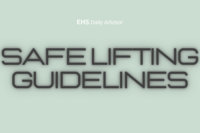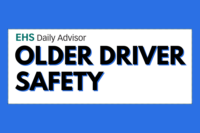On episode 212 of EHS On Tap, Jade Brainard, Senior Director of Product Management at KPA, explains how companies can get a complete picture of and eliminate at-risk behaviors in the workplace.
There has been increased attention paid to trenching and excavation safety in recent years. Here’s what you need to know about preventing trench collapses, according to NIOSH.
In this installment of EHSDA Shorts, Kenna Carlsen, Senior Research Associate, National Safety Council’s Work to Zero initiative, details the most important factors for EHS technical solutions. This clip was taken from a webinar titled “Making Innovation Accessible to Eliminate Workplace Fatality Risk,” which was part of EHS Worker Safety NOW virtual event. The full […]
On episode 211 of EHS On Tap, Dr. Terry McSween talks about his new book The New Values-Based Safety: Using Behavioral Science to Improve Your Safety Culture.
On episode 210 of EHS On Tap, Clare Epstein, General Manager of Commercial, Vector Solutions, talks about how industrial workers feel about their safety and well-being.
In this installment of EHSDA Shorts, Stuart Cook, Product Marketing Manager from Cority, explains what the highest priority for artificial intelligence (AI) is among EHS professionals based on a survey from Verdantix Global Corporate. This clip was taken from a webinar titled “Educational Session | Fantastic Voyage: Navigating the Growing Opportunities of AI for EHS […]
NIOSH says ergonomic interventions can lower the physical demand of work tasks and decrease the number and severity of musculoskeletal injuries that result. Here’s what you need to know about ergonomic guidelines for safe lifting.
In this installment of EHSDA Shorts, Derek Sang, Senior Technical Training Manager at Bulwark Protection, explains why professionals should wear flame retardant clothing in hazardous workplaces.
On episode 209 of EHS On Tap, Kenna Carlsen, senior research associate at the National Safety Council, talks about how geofencing technology can help make worksites safer.
With an increasing number of workers 55 and older who are driving on the job, there are steps that employers and workers can take to increase safety for older drivers. Here’s what you need to know about older driver safety.










